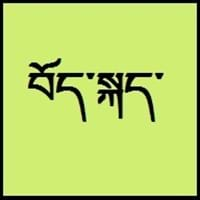Xhosa vs Tibetan
Countries
South Africa
China, Nepal
National Language
South Africa
Nepal, Tibet
Second Language
Lesotho, South Africa
Not spoken in any of the countries
Speaking Continents
Africa
Asia
Minority Language
Botswana, Lesotho
China, India, Nepal
Regulated By
Not Available
Committee for the Standardisation of the Tibetan Language
Interesting Facts
- Xhosa has 15 click sounds, borrowed from the khoi-khoi and san languages of the South Africa.
- The same sequence of consonants and vowels can have different meaning when said with different tones, so Xhosa is tonal.
- Tibetan dialects vary alot, so it's difficult for tibetans to understand each other if they are not from same area.
- Tibetan is tonal with six tones in all: short low, long low, high falling, low falling, short high, long high.
Similar To
Zulu, Swazi, and Ndebele
Not Available
Derived From
Khoi-Khoi and San Languages
Not Available
Alphabets in
Xhosa-Alphabets.jpg#200
Tibetan-Alphabets.jpg#200
Scripts
Latin
Tibetan alphabet, Tibetan Braille
Writing Direction
Not Available
Left-To-Right, Horizontal
Hello
Molo
བཀྲ་ཤིས་བདེ་ལེགས། (tashi delek)
Thank You
Ndiyabulela
ཐུགས་རྗེ་ཆེ་། (tujay-chay)
How Are You?
Unjani
ཁྱེད་རང་སྐུ་གཇུགས་བདེ་པོ་ཡིན་པས།
(kayrang kusu debo yimbay?)
Good Night
Ulale kakuhle
གཟིམ་ལཇག་གནང་དགོས་། (sim-jah nahng-go)
Good Evening
Ubusuku obuhle
དགོང་དྲོ་བདེ་ལེགས།
Good Afternoon
Uben' emva kwemini entle
ཉིན་གུང་བདེ་ལེགས།
Good Morning
Molo
སྔ་དྲོ་བདེ་ལེགས། (nga-to delek)
Please
Ndicela
thu-je zig / ku-chee.
Sorry
Ndicela uxolo
ཀོང་དགས་། (gawn-da)
Bye
Uhambe/Usale kakuhle
ག་ལེར་ཕེབས་། (kha-leh phe)
I Love You
Ndiyakuthanda
ང་ཁྱེད་རང་ལ་དགའ་པོ་ཡོད་ (nga kayrâng-la gawpo yö)
Excuse Me
Uxolo
དགོངས་དག བཟོད་དུ་གསོལ། ཐུགས་རྗེ་གཟིགས།
Dialect 1
Gcaleka
Central Tibetan
Where They Speak
South Africa
China, India, Nepal
How Many People Speak
Not Available
Dialect 2
Thembu
Khams Tibetan
Where They Speak
South Africa
Bhutan, China
How Many People Speak
Not Available
Dialect 3
Hlubi
Amdo Tibetan
Where They Speak
South Africa
China
How Many People Speak
Not Available
Speaking Population
Not Available
Second Language Speakers
Not Available
Native Name
isiXhosa
བོད་སྐད་ (pö-gay)
Alternative Names
“Cauzuh” (pej.), Isixhosa, Koosa, Xosa
Bhotia, Dbus, Dbusgtsang, Phoke, Tibetan, U, Wei, Weizang, Zang
French Name
xhosa
tibétain
German Name
Xhosa-Sprache
Tibetisch
Pronunciation
Not Available
Not Available
Ethnicity
amaXhosa, amaBhaca
tibetan people
Origin
16th Century
c. 650
Language Family
Niger-Congo Family
Sino-Tibetan Family
Subgroup
Benue-Congo
Tibeto-Burman
Branch
Bantu
Not Available
Early Forms
No early forms
Old Tibetan, Classical Tibetan
Standard Forms
isiXhosa
Standard Tibetan
Signed Forms
Signed Xhosa
Tibetan Sign Language
Scope
Individual
Not Available
ISO 639 6
Not Available
Not Available
Glottocode
xhos1239
tibe1272
Linguasphere
99-AUT-fa
No data Available
Language Type
Living
Not Available
Language Linguistic Typology
Subject-Verb-Object
Not Available
Language Morphological Typology
Not Available
Not Available
Xhosa and Tibetan Language History
Comparison of Xhosa vs Tibetan language history gives us differences between origin of Xhosa and Tibetan language. History of Xhosa language states that this language originated in 16th Century whereas history of Tibetan language states that this language originated in c. 650. Family of the language also forms a part of history of that language. More on language families of these languages can be found out on Xhosa and Tibetan Language History.
Xhosa and Tibetan Greetings
People around the world use different languages to interact with each other. Even if we cannot communicate fluently in any language, it will always be beneficial to know about some of the common greetings or phrases from that language. This is where Xhosa and Tibetan greetings helps you to understand basic phrases in Xhosa and Tibetan language. Xhosa word for "Hello" is Molo or Tibetan word for "Thank You" is ཐུགས་རྗེ་ཆེ་། (tujay-chay). Find more of such common Xhosa Greetings and Tibetan Greetings. These greetings will help you to be more confident when conversing with natives that speak these languages.
Xhosa vs Tibetan Difficulty
The Xhosa vs Tibetan difficulty level basically depends on the number of Xhosa Alphabets and Tibetan Alphabets. Also the number of vowels and consonants in the language plays an important role in deciding the difficulty level of that language. The important points to be considered when we compare Xhosa and Tibetan are the origin, speaking countries, language family, different greetings, speaking population of these languages. Want to know in Xhosa and Tibetan, which language is harder to learn? Time required to learn Xhosa is 44 weeks while to learn Tibetan time required is 24 weeks.





